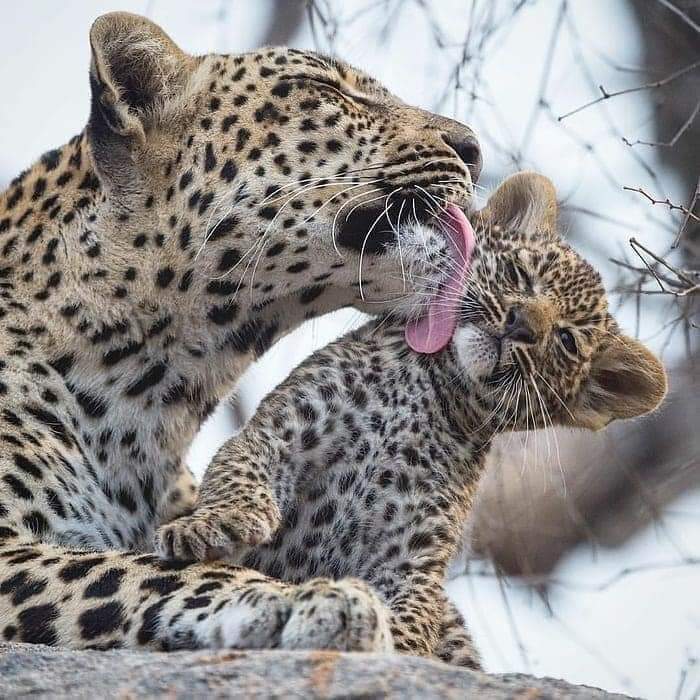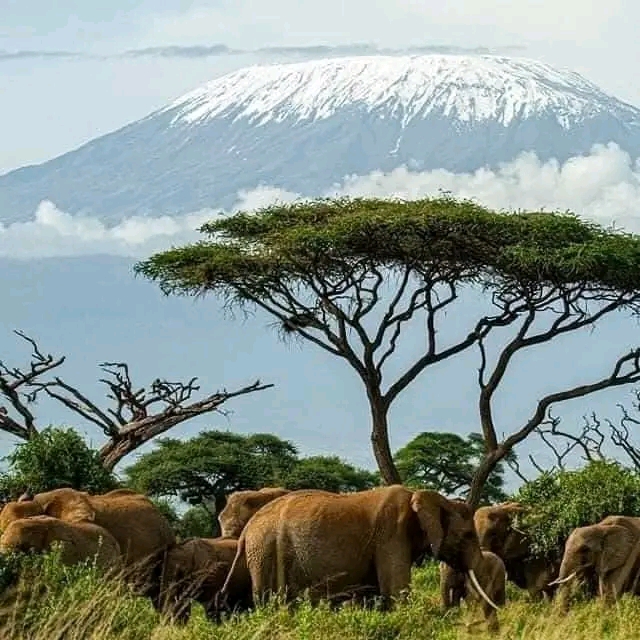
Leopard tracking experience in Uganda
September 28, 2023
Great Wildebeest Migration in Tanzania
October 25, 2023Wildlife Safaris in Kenya
Kenya is one of the most popular destinations in Africa for wildlife safaris. With a diverse range of national parks and game reserves, visitors can witness an incredible array of wildlife including the famous Big Five – lions, elephants, leopards, rhinoceros, and buffalo. Wildlife Safaris in Kenya guarantee wildlife sightseeing in Major National Parks and reserves.

Elephants in Amboseli
Top places to visit for Wildlife Safaris in Kenya
Masai Mara National Reserve
Located in southwestern Kenya, Masai Mara National Reserve is one of the most famous and popular National Parks in Africa. It is known for its annual wildebeest migration, where millions of animals make their way from Tanzania’s Serengeti National Park to Masai Mara in search of water and food. Other wildlife species include lions, cheetahs, elephants, zebras, giraffes, hippos, and crocodiles.
Located in southern Kenya at the foot of Mount Kilimanjaro, Amboseli is famous for its large herds of elephants and stunning views of Africa’s highest mountain. The park is also home to lions, cheetahs, hyenas, giraffes, zebras, buffalo, and many bird species.
Tsavo National Parks
Consisting of Tsavo East and Tsavo West, these two parks together form one of Kenya’s largest wildlife sanctuaries. Tsavo East is known for its large herds of elephants, while Tsavo West offers visitors the chance to see diverse wildlife such as lions, cheetahs, leopards, buffalos, giraffes, and rhinos.
Located in central Kenya, Lake Nakuru is known for its large population of flamingos that flock to the lake’s shores. The park is also home to other wildlife species such as rhinos, lions, leopards, zebras, giraffes, and buffalos.
Samburu National Reserve
Located in northern Kenya, Samburu is a less-visited park offering a unique wildlife viewing experience. Visitors can see species such as Grevy’s zebras, reticulated giraffes, Somali ostriches, and gerenuks, which are not found in other Kenyan national parks. Other wildlife species include lions, leopards, cheetahs, and elephants.
In addition to these national parks and reserves, there are many private conservancies in Kenya that offer exclusive wildlife viewing experiences. These conservancies often have fewer visitors than public parks and offer opportunities to see wildlife on foot or on night safaris.
Wildebesst Migration in Kenya
The wildebeest migration in Kenya is one of the most spectacular wildlife events that take place annually. It is a natural phenomenon where millions of wildebeest, along with other herbivores such as zebras and gazelles, migrate in search of greener pastures.
The migration primarily takes place in the Masai Mara National Reserve, located in southwestern Kenya, although it extends into the Serengeti National Park in Tanzania as well. The movement of the wildebeest herds is influenced by rainfall patterns and the availability of fresh grazing.
The migration follows a circular pattern, with the wildebeest moving in a constant search for food and water. In the early months of the year, around January to March, the herds gather in the southern Serengeti plains in Tanzania, where they give birth to their young. This is known as the calving season, and it is a period of intense predator-prey interactions as predators like lions, cheetahs, and hyenas take advantage of the vulnerable young calves.
As the dry season progresses and the grasses in the southern plains are depleted, the wildebeest begin their northward journey. By June or July, they start crossing the Grumeti River and make their way into the Masai Mara Reserve in Kenya. The river crossings are particularly thrilling and dangerous, as crocodiles lie in wait for the wildebeest as they attempt to cross the fast-flowing water.
In the Masai Mara, the wildebeest graze on the lush grasses until October or November when the rains start in the southern Serengeti. They then head back to the south, completing the circle of the migration.
The wildebeest migration is one of the seven natural wonders of Africa and is a major tourist attraction. Visitors from around the world come to witness this incredible spectacle, where millions of animals move in unison across vast savannah landscapes.
Best time to go for Wildlife Safaris in Kenya
The best time to go for wildlife safaris in Kenya is during the dry season, which runs from July to October. During this time, the animals gather around water sources, making them easier to spot, and the vegetation is thinner, offering better visibility. Additionally, the dry season provides ideal weather for safaris, with sunny skies and comfortable temperatures.
However, visitors should note that the dry season is also the busiest time for tourism, meaning that National Parks and reserves can become crowded and accommodation prices can be higher than other times of the year. If you prefer to avoid the crowds, you might consider traveling during the rainy season, which runs from November to May. The rainy season is a great time to see baby animals and migratory birds. However, the parks can be muddy and some roads may be inaccessible due to flooding.




